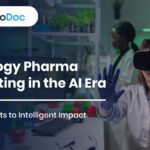Abstract
The advent of Real-World Data (RWD) has revolutionized oncology, offering unprecedented insights into patient journeys, treatment effectiveness, and safety in real-world settings. For pharmaceutical marketers, RWD presents a powerful opportunity to craft more targeted, relevant, and impactful campaigns. However, harnessing this rich data ethically is paramount, particularly given the sensitive nature of cancer patient information and stringent regulatory environments. This article delves into the ethical considerations and practical strategies for leveraging RWD in oncology marketing, emphasizing data privacy, informed consent, and transparent application. Furthermore, it critically examines the dual role of Artificial Intelligence (AI) in this landscape, dissecting its transformative advantages in data analysis and personalization, while simultaneously highlighting the inherent risks of bias, lack of explainability, and potential for misuse. For pharma managers and medical professionals, understanding this intricate interplay is crucial for developing responsible, data-driven oncology campaigns that ultimately serve to improve patient care and build lasting trust.
Introduction
Oncology marketing, distinct from other therapeutic areas, operates at the intersection of cutting-edge science, profound human vulnerability, and rigorous regulatory oversight. The ultimate goal is not merely commercial success, but the ethical and effective dissemination of information about life-saving treatments, diagnostic advancements, and supportive care to both healthcare professionals (HCPs) and patients. In this dynamic landscape, Real-World Data (RWD) has emerged as a transformative force.
RWD encompasses data routinely collected from diverse sources outside of traditional clinical trials, including Electronic Health Records (EHRs), medical claims data, patient registries, laboratory results, and data from digital health technologies. When rigorously analyzed to generate Real-World Evidence (RWE), it offers a more comprehensive understanding of how treatments perform in heterogeneous patient populations under routine clinical practice. For oncology marketers, RWD offers an unparalleled lens into patient pathways, treatment patterns, and unmet needs, enabling the creation of highly relevant and personalized campaigns.
Concurrently, Artificial Intelligence (AI) is rapidly becoming an indispensable tool for processing, interpreting, and applying insights derived from RWD. AI algorithms can identify subtle patterns, predict outcomes, and automate personalization at a scale previously unimaginable. However, the integration of RWD and AI in oncology marketing is not without its complexities. It introduces a critical ethical dimension, demanding meticulous attention to data privacy, algorithmic fairness, and transparency. This article aims to provide pharma managers and medical professionals with a comprehensive guide to ethically leveraging RWD and navigating the opportunities and challenges presented by AI in oncology campaigns.
The Ethical Imperative of Real-World Data in Oncology Marketing
The sensitivity of oncology patient data cannot be overstated. A cancer diagnosis is deeply personal, and the information associated with it carries immense implications for privacy, discrimination, and emotional well-being. Therefore, the ethical use of RWD is not merely a regulatory requirement but a moral obligation.
Key Ethical Considerations for RWD:
- Patient Privacy and Data Protection:
- Anonymization and Pseudonymization: The cornerstone of ethical RWD use. Data must be rigorously de-identified or pseudonymized to prevent the re-identification of individual patients. This is crucial for compliance with regulations like GDPR (General Data Protection Regulation) and HIPAA (Health Insurance Portability and Accountability Act).
- Data Governance Frameworks: Robust internal policies and procedures are essential for managing RWD. This includes clear rules for data access, storage, transfer, and destruction, ensuring that only authorized personnel can access the data for approved purposes.
- Cybersecurity Measures: Protecting RWD from breaches and unauthorized access is paramount. Strong encryption, access controls, and continuous monitoring are non-negotiable.
- Informed Consent and Transparency:
- Clarity of Purpose: Patients must understand how their data will be used. While direct consent for every marketing application of aggregated RWD may be impractical, the initial consent for data collection (e.g., for EHRs, registries) should ideally be broad enough to cover de-identified research and analytical uses, provided it’s clearly communicated.
- Opt-Out Mechanisms: Patients should have clear options to opt out of their de-identified data being used for secondary purposes, including marketing analytics.
- Transparency in Marketing: When RWD insights drive campaigns, pharma companies should be transparent about the data-driven nature of their approach, reinforcing their commitment to evidence-based communication.
- Bias and Representativeness:
- Avoiding Disparities: RWD, by its nature, reflects real-world clinical practice, which can unfortunately include historical biases or disparities in care. If RWD used for marketing insights disproportionately represents certain demographics or access levels, campaigns derived from it could inadvertently perpetuate or exacerbate these inequalities. Marketers must actively seek diverse and representative RWD sources.
- Clinical Relevance: Ensure that insights derived from RWD are clinically relevant and not merely statistical correlations without biological or medical plausibility.
- Balancing Individual Rights with Collective Benefits:
- The use of RWD can lead to collective benefits, such as accelerated drug development or improved understanding of disease progression, which ultimately benefit future patients. However, this must always be balanced against the individual’s right to privacy and control over their personal health information. Ethical frameworks emphasize minimizing individual risk while maximizing societal benefit.
Real-World Data in Action: Fueling Oncology Digital Campaigns
When ethically sourced and meticulously managed, RWD offers unparalleled opportunities for precision in oncology marketing:
- Understanding Patient Journeys and Unmet Needs:
- RWD can reveal intricate details of how patients with specific cancer types move through diagnosis, treatment lines, relapses, and survivorship. This allows marketers to identify critical “moments of truth” where information, support, or a specific intervention is most needed.
- Marketing Application: Develop targeted content (e.g., patient education guides, support program information) that aligns precisely with different stages of the patient journey, delivered through relevant digital channels.
- Analytics Focus: Track engagement with stage-specific content, patient progression through online pathways, and conversion rates for support program sign-ups derived from RWD-informed targeting.
- HCP Profiling and Engagement Optimization:
- RWD can provide insights into HCP prescribing patterns, referral networks, patient volumes for specific cancer types, and adherence to treatment guidelines. This granular understanding allows for highly personalized HCP engagement strategies.
- Marketing Application: Tailor educational materials, scientific exchange invitations, and even sales representative calls based on an HCP’s specific patient population or areas of interest derived from their RWD profile.
- Analytics Focus: Measure HCP engagement with personalized content (e.g., click-through rates on scientific articles, webinar attendance by specialty), correlation of engagement with prescribing patterns (within ethical and compliant boundaries), and feedback from sales teams on content relevance.
- Market Access and Value Demonstration:
- RWE can demonstrate the real-world value of a therapy, beyond controlled clinical trial settings, by showcasing its impact on patient outcomes, healthcare resource utilization, and quality of life in diverse patient populations.
- Marketing Application: Develop compelling value dossiers and payer communication strategies that leverage RWE to support reimbursement and formulary inclusion. Digital channels can disseminate these insights efficiently to formulary decision-makers.
- Analytics Focus: Track engagement from payers/HTA bodies with RWE summaries, and observe changes in formulary status or market access rates in relevant regions.
- Identifying Patient Cohorts for Clinical Trials:
- While not direct marketing, RWD can ethically identify potential patient cohorts for clinical trials based on specific disease characteristics or prior treatment lines. Marketing/communication efforts can then be directed (with appropriate consent and ethical oversight) to inform HCPs and patients about relevant trial opportunities.
- Analytics Focus: Track HCP engagement with clinical trial information, referrals to study sites, and ultimately, patient enrollment rates, demonstrating the efficiency of RWD-driven outreach.
The Dual Role of AI: Unlocking Potential and Managing Pitfalls
AI’s ability to process, analyze, and interpret vast quantities of RWD at speed makes it an indispensable partner in oncology marketing. However, its power comes with significant responsibilities.
Pros of AI in RWD-Driven Oncology Campaigns:
- Enhanced Personalization and Precision:
- AI algorithms can identify subtle patterns in RWD to segment patient and HCP audiences with extreme precision, allowing for hyper-personalized messaging and content delivery. This means the right message reaches the right person at the right time.
- Example: An AI might identify a cluster of oncologists in a specific region who frequently treat a rare subtype of lung cancer and prefer video content, enabling highly targeted webinar invitations.
- Predictive Analytics for Proactive Engagement:
- AI can predict future trends, such as potential patient drop-off points in a treatment journey, or emerging interests among HCPs. This allows marketers to proactively deliver supportive content or engagement opportunities.
- Example: Predicting patients at risk of non-adherence based on their digital engagement patterns or RWD-derived treatment history, allowing for timely, empathetic outreach from patient support programs.
- Automated Insights and Efficiency:
- AI can automate the extraction of insights from complex RWD, reducing the time and manual effort required for data analysis. This frees up human marketers to focus on strategy and creativity.
- Example: AI quickly sifting through millions of de-identified EHR notes to identify common side effect management strategies preferred by patients with a specific chemotherapy regimen.
- Optimization and A/B Testing at Scale:
- AI can continuously optimize campaigns by rapidly testing different messages, visuals, and channels against RWD-informed target audiences, identifying the most effective combinations for engagement and conversion.
Cons of AI in RWD-Driven Oncology Campaigns:
- Algorithmic Bias:
- Data Bias: AI models are only as good as the data they are trained on. If RWD reflects historical healthcare disparities (e.g., underrepresentation of certain ethnic groups, socioeconomic biases in diagnosis/treatment), the AI may learn and perpetuate these biases, leading to unequal or unfair targeting.
- Marketing Impact: Campaigns optimized by biased AI might inadvertently exclude or misrepresent certain patient populations, reinforcing health inequities.
- Mitigation: Rigorous auditing of training data for representativeness, implementing fairness metrics in AI development, and diverse AI development teams.
- Lack of Transparency (The “Black Box” Problem):
- Complex AI models can make decisions that are difficult for humans to understand or explain. This “black box” nature can be problematic in a highly regulated field like oncology, where explainability and accountability are crucial for compliance and trust.
- Marketing Impact: It becomes challenging to justify why an AI-driven campaign targeted a specific group or used a particular message if the underlying rationale isn’t transparent, posing compliance risks.
- Mitigation: Focus on Explainable AI (XAI) models, providing human oversight and intervention points, and clearly documenting AI decision-making processes.
- Privacy Risks Amplification:
- While RWD is de-identified, AI’s ability to link disparate data points can, in rare cases, increase the theoretical risk of re-identification, even if unintentional.
- Marketing Impact: This risk demands extremely robust data governance, advanced anonymization techniques, and continuous monitoring.
- Mitigation: Strict adherence to privacy-preserving AI techniques, differential privacy, and rigorous data security protocols.
- Potential for Misleading Claims (AI-Generated Content):
- The rise of generative AI allows for rapid content creation. If not carefully supervised, AI could generate marketing claims that are not scientifically accurate, balanced, or compliant with regulations, leading to severe reputational and legal consequences.
- Marketing Impact: AI-generated patient testimonials or outcome simulations that lack a real-world basis can erode trust if perceived as fake or misleading.
- Mitigation: Implement strict human-in-the-loop review for all AI-generated content, integrate AI into established Medical, Legal, and Regulatory (MLR) review processes, and clearly label AI-generated content where appropriate.
Analytics: The Bridge Between Data, Ethics, and Impact
Digital marketing analytics play a pivotal role in ensuring ethical RWD use and maximizing AI’s benefits while mitigating its risks.
- Compliance Analytics:
- Audience Reach Verification: Confirm that RWD-driven targeted campaigns are indeed reaching the intended HCP specialties or patient segments, and not inadvertently reaching non-approved audiences.
- Content Balance Monitoring: Analyze engagement with benefit vs. risk information in digitally distributed content. Ensure that both are viewed adequately, indicating balanced presentation.
- Regulatory Adherence Dashboards: Develop dashboards that track key compliance indicators (e.g., proper disclosure, avoidance of off-label promotion) across all digital channels informed by RWD.
- Fairness and Bias Detection Analytics:
- Demographic Performance Tracking: Monitor campaign performance across different demographic groups within the target audience (e.g., engagement rates, conversion rates) to detect and correct any unintended disparities.
- Algorithm Auditing Tools: Utilize specialized tools to audit AI algorithms for bias in their predictions or recommendations, ensuring equitable outcomes.
- Impact Measurement and RWE Generation:
- Patient Journey Progression: Track how RWD-informed digital interventions influence patient behavior (e.g., increased engagement with educational materials, earlier seeking of specialist consultation).
- HCP Behavior Shift: Analyze if RWD-driven personalized content leads to desired HCP behaviors, such as increased attendance at relevant scientific events or engagement with clinical trial information.
- Outcome Correlation (De-identified): Where ethically permissible and rigorously de-identified, correlate digital marketing efforts with real-world patient outcomes from RWD to demonstrate positive impact (e.g., improved adherence for patients exposed to support programs).
Strategic Imperatives for Pharma Managers
To effectively harness RWD and AI in oncology marketing, pharma managers must adopt a holistic and proactive approach:
- Prioritize Data Governance and Security: This is non-negotiable. Invest in robust infrastructure, skilled privacy officers, and continuous security audits.
- Cultivate an “Ethics-First” AI Culture: Integrate ethical considerations into every stage of AI development and deployment. Train teams on potential biases and the importance of explainability.
- Invest in Cross-Functional Teams: Foster collaboration between marketing, medical affairs, regulatory, legal, data science, and IT departments. RWD and AI projects demand diverse expertise.
- Embrace Incremental Adoption and Learnings: Start with pilot projects to test RWD and AI applications on a smaller scale, gather learnings, and refine strategies before broader implementation.
- Focus on “Fit-for-Purpose” RWD: Not all RWD is created equal. Ensure the data sources are relevant, of high quality, and appropriate for the specific marketing question being addressed.
- Champion Explainable AI (XAI): Push for AI solutions that can provide transparent rationales for their recommendations, fostering trust and enabling easier compliance checks.
- Maintain the Human Element: While AI can automate and personalize, human oversight, empathy, and ethical judgment remain critical. AI should augment, not replace, human creativity and compassionate communication.
- Proactive Engagement with Regulators: Stay abreast of evolving guidance on RWD and AI from regulatory bodies and consider participating in industry working groups to help shape best practices.
Conclusion
The judicious and ethical application of Real-World Data, amplified by the power of Artificial Intelligence, represents the next frontier for oncology marketing. It offers an unparalleled opportunity to move beyond mass communication to hyper-personalized, evidence-based engagement that genuinely addresses the unique needs of patients and HCPs in the cancer care ecosystem. However, this transformative potential is inextricably linked to the rigorous adherence to ethical principles, particularly patient privacy, data security, and algorithmic fairness. For pharma managers and medical professionals, success in this new data-driven era hinges on a deep understanding of RWD’s nuances, a balanced appreciation of AI’s dual nature, and an unwavering commitment to transparency and ethical practice. By doing so, we can ensure that these powerful technologies serve their ultimate purpose: to accelerate scientific progress, empower individuals, and ultimately contribute to better outcomes in the fight against cancer.
The Oncodoc team is a group of passionate healthcare and marketing professionals dedicated to delivering accurate, engaging, and impactful content. With expertise across medical research, digital strategy, and clinical communication, the team focuses on empowering healthcare professionals and patients alike. Through evidence-based insights and innovative storytelling, Hidoc aims to bridge the gap between medicine and digital engagement, promoting wellness and informed decision-making.



